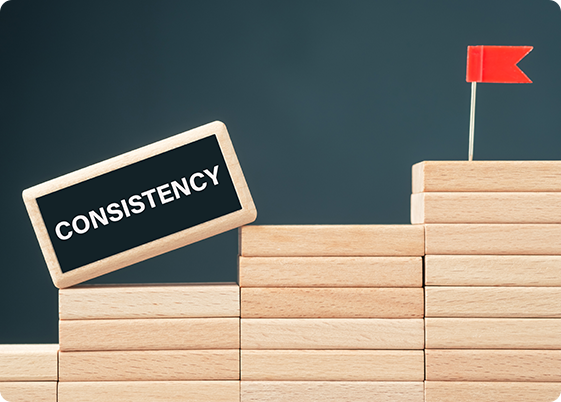Delivering top-notch customer service maintains customer loyalty and drives business growth. As customer expectations evolve, streamlining workflows and improving service efficiency becomes increasingly important. This is where a Business Process Management (BPM) methodology comes into play.
This article will guide customer service managers, operations leaders and CX professionals in choosing the best BPM methodology to enhance service operations.

What is a BPM Methodology?
Let’s first answer: what is business process management?
BPM stands for Business Process Management. It refers to improving a company’s workflow to enhance efficiency, agility and service quality. BPM methodologies provide structured approaches to managing and optimising processes, ranging from simple, repetitive tasks to complex, cross-functional activities. These methodologies involve designing, modeling, executing, monitoring and continuously improving business processes. Understanding BPM helps organisations align their service operations with their overall strategic goals.
Different types of BPM methodologies are suited to different business needs. Some common BPM methodologies include Lean, Six Sigma, Agile and Total Quality Management (TQM). Each methodology has unique strengths, and the choice of one depends on the business requirements.
Importance of BPM Methodology in Customer Service
Why is business process management methodology important in customer service? Simply put, it allows companies to improve the efficiency and quality of their service operations. A structured approach to process management allows customer service teams to:

Enhance customer satisfaction
A well-managed process ensures customer queries are handled quickly and accurately.
Improve efficiency:
Streamlined workflows reduce unnecessary steps, saving time and resources.
Increase agility:
With the correct BPM implementation methodology, service teams can quickly adapt to changes in customer expectations or market conditions.

Ensure consistency
A defined process reduces variability in service quality, ensuring every customer receives uniform care.
By leveraging the benefits of business process management, companies in Jamaica can deliver better customer service while reducing operational costs. It is imperative in fast-paced environments such as call centres, where efficiency and customer satisfaction are critical. For example, call centres—which often handle high enquiries—can benefit from a well-chosen BPM strategy that optimises resource allocation and streamlines customer interactions.
Factors to Consider When Choosing a BPM Methodology for Customer Service
Selecting the correct BPM methodology is not a one-size-fits-all decision. It requires careful consideration of several factors that directly impact the success of your customer service operations.

Business Needs
The first step in choosing the best BPM methodology is assessing your business needs. What are the primary goals of your customer service operations? Are you looking to reduce costs, improve response times, or enhance customer experience? Different BPM methodology best practices cater to various goals.
For instance, if your main objective is eliminating inefficiencies and reducing waste in your processes, Lean BPM may be the right choice. On the other hand, if you’re looking to improve the quality of service by minimising errors, Six Sigma could be a better fit.
Company Culture
Your company’s culture is also critical in determining which BPM implementation methodology will be most effective. Some BPM methodologies require a high degree of employee involvement and collaboration. For example, Agile BPM promotes continuous feedback and requires highly adaptable and collaborative teams. Agile might be an excellent fit for customer service operations if your company culture supports open communication and flexibility.
On the other hand, if your organisation values structure, consistency and clear lines of authority, a more formal BPM methodology like Total Quality Management (TQM) or Six Sigma may be more appropriate. Matching it to your company culture ensures a smoother implementation and higher levels of employee engagement.

Customer Expectations
Customer expectations directly impact which BPM methodology is best for your service operations. If your customers expect fast response times and personalised service, you’ll need a method that supports agility and flexibility. Agile or Lean BPM may be well-suited for environments where customer demands are constantly changing, such as in tech support or online service centres. However, if your customers prioritise consistency and reliability over speed, a more structured BPM methodology like Six Sigma or TQM could be better.
Implementation Resources
Another crucial factor in choosing a BPM methodology is the resources available for implementation. Some BPM methodologies require significant investment in time, money and expertise. For instance, implementing Six Sigma often requires extensive training and hiring specialised personnel (such as Six Sigma Black Belts). A simpler and more cost-effective methodology like Lean BPM might be better if your organisation has limited resources. Consider the technology and tools available for BPM implementation methodology. Some methodologies require advanced softwares to model, monitor and optimise processes, while others may be less dependent on technology.

Complexity of Service Processes
Finally, consider the complexity of your service processes when selecting a BPM methodology. You may need a more robust BPM methodology to handle this complexity if your customer service processes involve numerous steps, departments, or systems. With its data-driven approach to process improvement, Six Sigma is ideal for complex environments where precision is crucial. On the other hand, if your service processes are relatively simple and repetitive, a lighter BPM methodology like Lean may be sufficient. Lean BPM eliminates waste and streamlines processes for straightforward customer service operations such as routine enquiries or order processing.
Conclusion
Choosing the proper BPM methodology for customer service optimises workflows, improves efficiency and customer satisfaction. Organisations can select a methodology that aligns with their goals and carefully drives success by certain factors. By leveraging BPM, businesses can create a customer-centric culture, deliver exceptional service experiences and achieve long-term competitive advantage.
Ready to make a difference? Join the HGS and explore call centre jobs in Jamaica.
 Jamaica
Jamaica Canada
Canada Colombia
Colombia India
India Philippines
Philippines UK
UK US
US SA
SA



